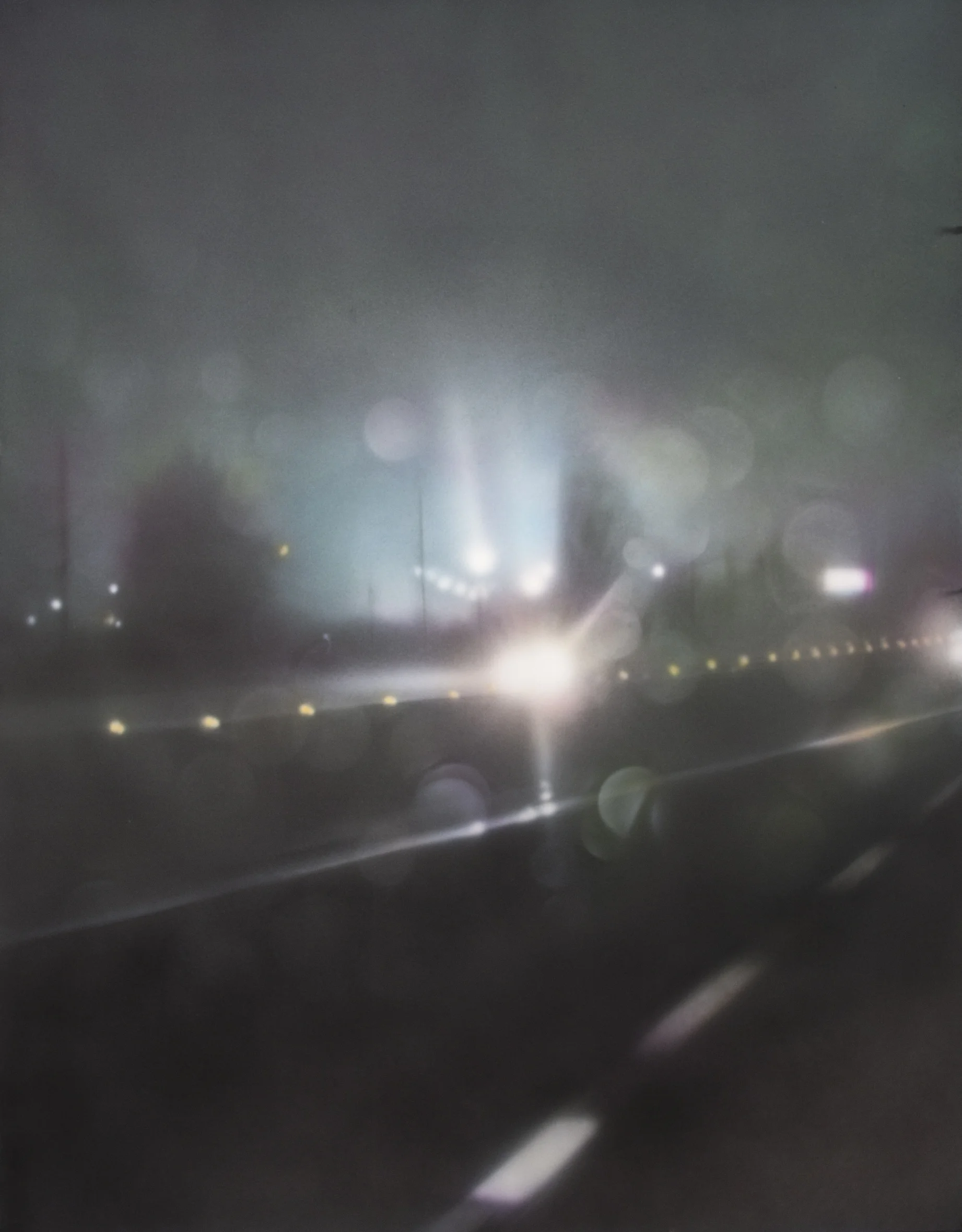City of Los Angeles (COLA) Exhibition, 2013
Samantha Fields: Clear in the Haze by Annie Buckley
Sometimes, it’s through moments of deep uncertainty that we ultimately find our way. If not an adage, exactly, this is surely an oft-repeated truth, but what does it mean exactly? To understand the phrase—and, in a parallel perceptual realm, the mutable yet intoxicating surfaces of Samantha Fields’ new paintings—we must take it apart. To find one’s way implies that there is a route to be discovered, and not just any route, but the right one. To bemoan not knowing suggests that somewhere out there clarity is lurking, waiting for us to simply recognize and understand it. Despite the inherent impossible-ness of the task, we want to know, to be certain of where we are headed or what we understand our role to be. Paradoxically, following the logic of our would-be adage and of Fields’ striking canvases, we make room for comprehension within the very space of recognizing and accepting incertitude.
Fields’ long-time exploration of looking, specifically at nature but more generally at the world around us, has led the artist on dangerous expeditions into rather than away from fires and storms in an effort to document the incredible power of weather. It was on one of these journeys that she came upon, quite literally, a deer in the headlights. In photographing it (badly, in her own estimation) Fields transformed her own practice, in effect mirroring the metaphoric state the animal represented. By painting this photograph—the missed shot, the lost opportunity—she set her work on a new path, one less about looking at nature and more about looking at looking, a metacognitive practice that grounds the new paintings but sounds much headier than the actual emotional, perceptual, and aesthetic experience they inspire, simultaneously inhabiting and inviting viewers into two seemingly opposite states: planning/thinking and being/experiencing.
With the COLA Grant, Fields has continued to paint from what she refers to as “failed photographs” while also taking new pictures of the landscape, intentionally photographing through blurry windows and at skewed angles, allowing the imperfections of one media to enhance and dramatize the potentiality of another. Using a camera equipped with a high-speed lens capable of shooting in low light, she was able to capture the glow and lurch of nocturnal scenes often missed by the casual viewer, particularly one sitting in a car speeding down a freeway at night. Utilizing a a meticulous process of spraying fine mists of paint, layer upon layer, over a smooth canvas, Fields continues to expand on the integration of would-be flaws in the photographic process, painting in sun spots that showed up on reproductions she took of works-in-progress as well as the elegantly hexagonal-shaped lens flares produced by this particular camera.
One hazy midnight landscape, horizontally streaked with pale blue, Passenger, 2013, could easily be described as non-objective were it not for a faint line of trees at its center. The photograph this painting is based upon was taken from the window of a car driven by Fields’ husband, artist Andre Yi, as it sped down a darkened highway on the Olympic Peninsula in Washington State. The pair was returning from an excursion to Hurricane Ridge, a backstory that is both meaningless and meaning-full in relation to the painting itself. On the one hand, it matters that Fields was in the car and took the photograph while on an enjoyable trip; on the other, the specific details matter less than the fact of biography and its indication of a person seeing and experiencing. Passenger, 2013 is less an image of a landscape at night and more a depiction of being/viewing. By choosing to use this strange and blurry photograph as the impetus for a painting, Fields suggests that site doesn't matter, or rather, that its import is located wherever we encounter it.
The COLA Grant, uniquely designed to offer artists the opportunity for experimentation, seems the perfect context for a visual exploration of uncertainty and fugue; interestingly, in painting images of faulty photographs and in-between spaces, Fields has arrived at a place of depicting the precise but fleeting nature of presence. The oncoming headlights of a car at night become a brilliant orb in the center of a concentric composition in Nocturne 2, Eugene, 2013, easing into a charcoal grey ground tinged with blue like the rays of a star in the night sky or the trail of an elusive jellyfish deep in the sea. One of Fields’ first large works on paper, the painting vacillates between landscape, however ordinary, and abstraction. It deftly transforms the everyday into something magical, a feat, to be sure; but more important to her project, I think, is the way the painting becomes something that is neither here nor there, not the journey nor the process but a finite and distinct collision of light and time and memory catapulted slowly and carefully into being











